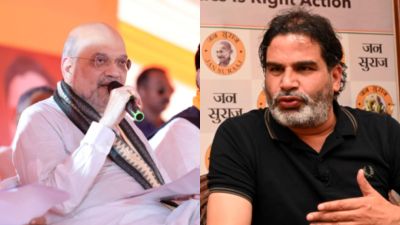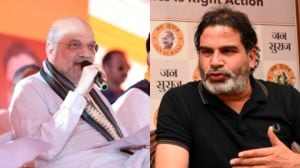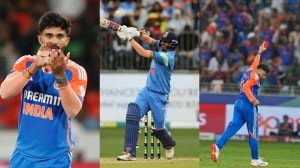Celebrating an innovative India
From little-known Government departments to some of the most celebrated corporate brands, the EMPI-Indian Express Indian Innovation Awards have picked up a wide range of winners for this year’s edition.

From little-known Government departments to some of the most celebrated corporate brands, the EMPI-Indian Express Indian Innovation Awards have picked up a wide range of winners for this year’s edition. The winners were picked up from more than 400 applications after a rigorous three-stage evaluation process. There were 20 organisations in the final shortlist, from which the 14 winners were selected. The selection panel was headed by eminent scientist M G K Menon and included academics, technologists, consultants and administrators. The entire process was moderated and validated by Boston Consulting Group, India, with its chairman Arun Maira playing a key role. In this two-part series, The Indian Express brings you a short profile of each of the winners. Today, we carry the nine Gold awardees, which will be followed by profiles of the five silver awardees tomorrow.
As part of their globally acclaimed corporate social responsibility, TCS started an adult literacy programme around 2000, using an in-house developed software. The beauty of this programme is that it makes the people literate in just about 35-40 hours training without the need for any instructors. “The only requirement is that the people should be able to speak the language that they are trying to get literate in,” says Pankaj Baliga, Global Head of the TCS’s Corporate Social Responsibility programme. “After the training, people are able to read 60 to 70 per cent of a newspaper in their language.” The software has been developed in nine Indian languages, including Urdu, and the company has been able to make more than 1,00,000 people literate as of now. “At TCS, we use our core competence in IT to solve large-scale societal problems,” Baliga says. He says the Government can take this forward to reach out to a much larger number of people. “We are planning to put this simple software on a website from where it can be downloaded. If the Government opens up computer centres in villages, this software can be downloaded and used by people to become literate,” he says.
Karnataka State Road Transport Corporation
Till 2000, this state road transport corporation was just another loss making PSU, a monolith of buses, management and logistics. Yet as that year passed, something new emerged, something that changed bus travel, as we know it. “I was in Sweden in 1999, there we realised that it was only technology that could take an organisation to the top. We had to keep in track with the technology accreditation,” says Ananda Rao, head of environment, KSRTC. It was from this that AWATAR (Any Where Any Time Advanced Reservation), a web enabled ticketing application, was born. Through the Internet, this service gave customers the ability to book return tickets in advance, cancel tickets with a host of other options. And it didn’t end there. “We set up electronic ticketing systems in 5,000 buses in a record three months. There was no punching tickets, or ambiguity of collections after that. Even the conductors were happy that they were not being blamed for ticketing problems anymore,” says Rao. The corporation decided to induct between 800 and 1,000 buses every year, while scrapping any bus that had travelled more than 7.5 lakh km. “Today the average life of any of our buses is 4.5 lakh km. That ensures that they pollute less, there are less breakdowns, fewer accidents and lot more reliability,” adds Rao. The proof: the initiative has transformed this PSU into a profit making Rs 1000-crore turnover company, with a dedicated workforce.
Midas Communications
Since its inception in 1994, this IIT Madras incubated company has been successfully connecting the heart of India to the World Wide Web. Its wireless product corDECT and DSL flagship DIAS, today connect over three million members of the rural community, enabling them with essential services that range from telemedicine and e-agriculture to distance education and e-veterinary help. With indigenous design and ingenious applications, Midas has been able to cut down infrastructure costs while providing quality voice and Internet connectivity. Cable corDECT, a broadband access system developed by Midas, uses widespread cable TV network for downstreaming communications and a wireless system to upstream information, creating a bi-directional communication pathway that overcomes the problems of TV Cable networks, while providing bankable broadband access to the rural areas. Midas gets this award for truly bridging the information divide.
When we looked at the rural market, we realised that there were only 2.5 tonne or 4 tonne vehicles that were available to carry weight from the rural areas. Transport entrepreneurs were having a difficult time, as most people wanted to transport weight that was a lot less than 2.5 tonne. The entrepreneur had to wait for multiple deliveries before he could travel, his vehicle used to be idle for all that time, it was inefficient,” explains A S Puri, deputy general manager of Tata Motors. Yet the problems didn’t end there. The only alternative to these trucks, were three-wheelers that were unbalanced, unsafe and extremely uncomfortable. The challenge was to create a stable four-wheeler, with a price comparable to that of a three wheeler,” adds Puri. The first thing the company did was to develop a method of creating two engines from the same metal block that gave them one Tata Indica engine. Soon enough the Tata Ace was born. “With a capacity of around 0.75 tonne, this pick-up truck has achieved last mile connectivity while allowing the entrepreneur to make multiple trips, enabling him to earn more,” says Puri. The proof: more than a lakh of these travel roads of rural India today.
Genpact
When in the mid 1990s, GE discovered the potential of outsourcing their back office work to India, a new wave of employment and opportunity was born. GE Capital International Services left the GE stable to mature as Genpact, India’s largest independent BPO. The growth curve also took its employees with it. “It’s probably one of the most interesting careers one can have. I cannot think of any other industry that can give an individual this range of experience and knowledge,” says Pramod Bhasin, president and CEO of Genpact. However, it is faced with a dangerous disease called attrition. “This is a ‘people’ business. So, managing attrition, coming up with new ideas on hiring and training, is as important as bringing out a new car is to an auto company.” When Genpact found that young ambitious employees were leaving for higher studies, it created the first of its kind Education@Work programme by signing a series of alliances with professional education institutes and universities allowing employees best in-class education while continuing their work. But it wasn’t just the graduates that benefited. The Associate Trainee Program helped young people go for a regular university degree while gaining experience at Genpact, right after Class XII. “The war for talent is just starting, and it is going to be brutal, warns Bhasin, but he is confident that “the BPO industry will be India’s largest private sector employer.”
Amitabh Sinha & Arjun Jassal
L V Prasad Eye Institute
The L V Prasad Eye Institute in Hyderabad has evolved a highly-effective eyecare model that has benefited millions of people in Andhra Pradesh and Orissa. Through the innovative idea having vision guardians—local youth trained in basic eye healthcare—the institute has managed to reach out to a large number of people at the village and block levels. It has linked these people with higher and better levels of eye care through a well-connected network of primary, secondary and tertiary eye centres, at the top of which is a Centre of Excellence in Hyderabad, with increasing level of expertise and facilities. The best part is that the cost incurred for a comprehensive treatment of one person is less than Rs 40. Started in 1997, the L V Prasad Eye Institute now caters to a population of 50 million. On an average, the Centre for Excellence in Hyderabad provides outpatient services to nearly two lakh patients and performs 25,000 surgeries.
Water Supply and Sanitation Department, Govt of Maharashtra
The Maharashtra Government had been noticing that despite offering subsidies for construction of toilets in the villages, the sanitation programme was not very successful. “The villagers would use the subsidy to construct toilets but did not use them even then. We realised that it was not a problem of resources but of a mindset,” says Sanjeev Kumar, till recently a joint secretary in the Ministry of Water Supply and Sanitation in the Maharashtra Government. The then minister in charge, R R Patil, started a new drive in the name of Sant Gadge Baba, a famous saint of the last century who had devoted his entire energy for the upliftment of poor. The department started a cleanliness competition at the taluka, tehsil and district levels with the winners getting lots of prizes and publicity. Prominent people like Amitabh Bachchan, Madhuri Dixit and Sachin Tendulkar were roped in for the campaign. The inculcation of competitive spirit began to show results. Today more than 7,000 villages in Maharashtra have been declared free from open defecation. The land used for open defecating earlier has now been converted into parks or common utilities. The campaign has also resulted in creating awareness about related issues like waste water management.
Multi-Commodity Exchange of India
In just about four years since inception, MCX innovations have managed to grow a start-up business into a sunrise industry, helping unlock value at the bottom of the pyramid, accelerating rural investment and enhancing rural employment. The contribution of MCX on the Indian commodities market has been innovative application of technology through IT, speed of implementation, and domain knowledge in the commodity segment. All these measures have collectively resulted in MCX’s success: from a daily turnover of a few crore in 2003 to $3 billion per day today. The exchange is fostering the creation of a new ecosystem: one, which is widespread in rural areas yet linked to urban India. As Joseph Massey, deputy managing director of MCX says, “Here, innovation is a way of life, as we integrate rapidly growing India with increasingly complex global market. We need to understand that the present climate is one that favours innovation and entrepreneurship. Globalisation has thrown up opportunities that can be exploited to create ‘Brand India’ to match global brands. There is little doubt that in the coming decades the global economy will reward markets and companies that are innovative and value creating.” The MCX has shown the way, soon the supply chain will follow.
Keggfarms
There are about three crore BPL households that raise poultry as a side activity. We wanted to take this incidental activity and transform it into a remunerable activity, helping those families while creating a business opportunity for us,” explains Vinod S Kapur, chairman of Keggfarms. Under the aegis of Kapur, an engineer who founded the farms, the oldest organisation in India engaged in genetic research and development, quickly got to work. This rush was for a reason; liberalisation was knocking on the country’s doors and Kapur wanted to be strong enough in the rural markets to take on global Goliaths who intended to capture the market for themselves. The result was the ‘Kuroiler’, a coloured bird that could be raised on the traditional diet of kitchen and farm waste, but provided more meat and more eggs, in less time. The Keggfarms also set up a new distribution model that raised chicks in independent nurseries, which were then distributed through self-employed village vendors who sold the chickens to the households. “Today, this has helped over eight lakh people in UP, Jharkhand, West Bengal, Orissa, Northeastern states, Chhattisgarh and Uttarakhand. It’s been recognised by the FAO and become a case study for the Harvard Business School,” says Kapur, proudly.





- 01
- 02
- 03
- 04
- 05


























